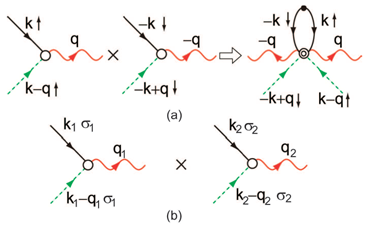The Puzzle of Superconducting LEDs Explained
It makes intuitive sense that if superconductors can carry currents with zero resistance, then superconducting light emitting diodes might do their stuff with equally amazing efficiency.

But superconducting LEDs are not only bright, they are brighter than anyone can explain, even after taking superconductivity into account. Now a team of Japanese theorists seems to have figured out the puzzle.
The mystery began last year when Japanese researchers built a device to study the way in which Cooper pairs in superconducting niobium would emit light when combining with holes generated in a PN junction. To their surprise, the researchers found that their superconducting LED was not only bright but outshone their expectations by an order of magnitude. What on Earth was going on?
Now Yasuhiro Asano at Hokkaido University in Japan and a few buddies say that the effect can be explained by two peculiar second order effects that occur together only in superconductors. The so-called “giant oscillator strength” and a resonant effect both allow much higher numbers of Cooper pairs than expected to combine with holes and produce photons. This explains the result, say Asano and co.
This is exciting not just because superconducting LEDs will be bright but because Cooper pairs can also produce entangled pairs of photons. That raises the prospect of intense sources of entangled pairs, the likes of which physicists have not yet seen. And that could be hugely useful for everything from quantum communication to quantum teleportation.
Ref: arxiv.org/abs/0905.1182: Luminescence of a Cooper Pair
Keep Reading
Most Popular
Large language models can do jaw-dropping things. But nobody knows exactly why.
And that's a problem. Figuring it out is one of the biggest scientific puzzles of our time and a crucial step towards controlling more powerful future models.
The problem with plug-in hybrids? Their drivers.
Plug-in hybrids are often sold as a transition to EVs, but new data from Europe shows we’re still underestimating the emissions they produce.
Google DeepMind’s new generative model makes Super Mario–like games from scratch
Genie learns how to control games by watching hours and hours of video. It could help train next-gen robots too.
How scientists traced a mysterious covid case back to six toilets
When wastewater surveillance turns into a hunt for a single infected individual, the ethics get tricky.
Stay connected
Get the latest updates from
MIT Technology Review
Discover special offers, top stories, upcoming events, and more.